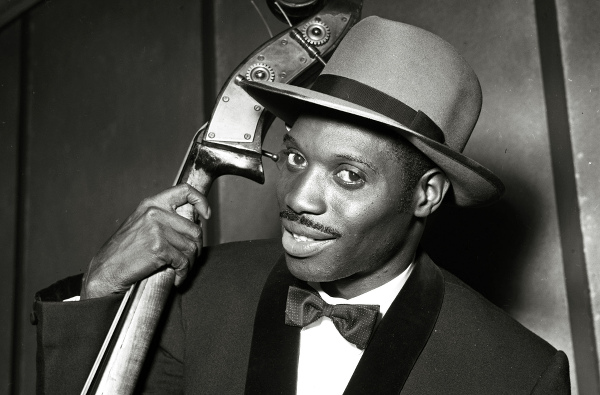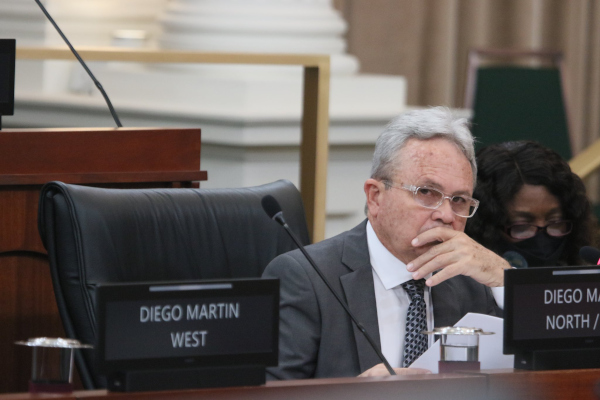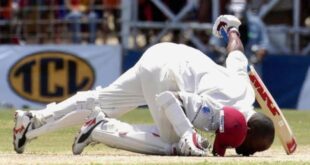Remember the OUR OBSCENE TRAGEDY editorial to which the Guardian devoted its front page on Sunday 7 February?ô
The following day, the Express devoted both its front and back pages to continuing outrage and public protests over the most recent killing of a 23-year-old The UWI graduate. And contrary to everything Fundamentals of Reporting teaches, the logo on the bottom of the front page read, ãThe Kidnapping & Murder of Andrea Bharattã.ô

Murder? No autopsy had yet confirmed the cause of death. And none of the suspects had yet been charged. Not that anybody disputes that Bharatt was dead. But did we know that she was murdered, that is, killed unlawfully and with premeditation?
Me? I mistrust their motives. Do you also sense that the media are bent on shamelessly bleeding every millimetre of mileage out of the victimãs death? Thatãs not to trivialise it or minimise it, is it?
ãAny time that pure evil is over represented,ã wrote Valerie Youssef in Tout Moun in 2011, ãit has the potential for penetrating the very core of those it touches and destabilizing in profound ways.ã
Someone, I think, would be well advised to re-send the overkill memo to the two dailies.ô
I know. Officially, there are three. Newsday, along with LoopTTãthe Digicel-backed online paperãand TTT, is also part of the daily local news environment. Not for me.

I do know, though, that the ãgood newsã paper first hit the streets when, in the years following the armed revolt of 1990, T&T found itself in the throes of a quiet media revolution. From two radio stations and one television station when Yasin Abu Bakr and his 114 insurgents launched their ill-fated coup attempt, we exploded to soon number a couple dozen media outlets.
And it wasnãt long before social media came home to us, vastly complicating life for their conventional counterparts. All over the world, media in general and paper newspapers in particular have since been finding themselves forced to do something different just to stay afloat, let alone be competitive.
We have already seen how the back of the dailies reactedãor failed to. So how, if at all, have our news media as a whole adapted? And what adjustments have they made in the face of the global pandemic and the lockdowns in particular that it has brought with it?ô
To some degree, television has.ô
On Independence Square, they must think that, post-Covid-19, they have found the viewership mother lode. TV6 recently increased from 60 to 90 minutes the amount of time devoted to their evening news.ô

I can speak for no one else but I have never once got over the hump.
At CNC3, the current ãnewsã format is almost unrecognisable from just a couple of years ago when studio presenters narratedãand dominatedãthe entire package. Nowadays, gone are the talking heads, the switching gears and tossing it from one to the other. Taking their place consistently in the hour are reporter/cameraman teams and individual reporters hitting the road and bringing the whole country not to the set but to the screen.
There is other new stuff as well. They havenãt quite hit pay dirt yet but it is obvious that the search is on.
Radio too has metamorphosedãI almost said ãmetastasised.ã Talk radio is in. With a vengeance. And to add to the endless easy vision media hits Facebook and YouTube provide, the man-in-the-street can now get his 15 seconds of effortless voice media fame.ô
With an almost literally captive audience, the superlative station, i95.5fm, doesnãt even bother to pretend anymore. At prime times, they subject us to every ad possible, even if it means that, at five minutes past the hour, the whatever-ãoã-clock major newscast is just beginning.

(via Ministry of Works and Transport)
But if on radio, the price you pay is merely in time and patience, in the online newspapers, itãs in kind. Youãll get a teaser for free; if you want full access, thereãs a paywall standing in your way.ô
The sharing that matters is shareholding. And market share. Because of that war, even the age-old conventions are ignored. Nowadays, if the price is right, the once inviolate masthead can be used on a (gl)ad wrapãmy term for the cloak in which the entire paper has on occasion been enveloped.
Is there a concomitant rise in the quality on offer? Not, as we have seen, in the sports sections. Is quality improved anywhere, in the news up front or the central features section?
Hear Dr Youssef again:ô
ãThere can be no doubt that what appears in print must firstly be motivated by owner and producer perceptions of what sells.ô
ã[ãÎ] Competition for sales has been exacerbated by the arrival of the newest paper, the Newsday, and by its more populist approach which immediately began to draw sales.ã

That was written almost ten years ago, in August 2011; it could have been written ten minutes ago!ô
Which, truth be told, is not so far off the mark if applied to the weekly columns that ritually appear on the same day and in largely the same place. Sadly stationary in a fast-moving world.ô
The Guardian still says that ã[l]etters should be no more than 500 words longã, a stipulation the Express has recently dropped. But neither paper has found a way to abandon the ãsame-day-every-weekã stiffness.
Every columnist knows there are times when there is so much material on your plate, you can dash off half a dozen solid columns in quick succession. But there are also weeks when nothing of substance offers itself to you.ô
Still, your contract says that you have to deliver something on X-day. So in a dry week, you dust off an old energy column and tweak that. Perhaps as many as 12 times per year.ô
Or you quote yourself substantially from eight, ten, 12 years ago. Or more.ô

But who or what is really to blame: Ralph Maraj, or the inflexibility of the anachronistic arrangements?ô
In the Wired868 model, columnists get published when they have something substantial to say.ô
And under no pressure to produce on demand, they are able to satisfy a widely diverse readershipãÎ
ãÎwith the exception, perhaps, of sarcastic commenters.
Earl Best taught cricket, French, football and Spanish at QRC for many years and has written consistently for the Tapia and the Trinidad and Tobago Review since the 1970’s.
He is also a former sports editor at the Trinidad Guardian and the Trinidad Express and is now a senior lecturer in Journalism at COSTAATT.
 Wired868 Wired868 for smart sport news and opinion
Wired868 Wired868 for smart sport news and opinion






